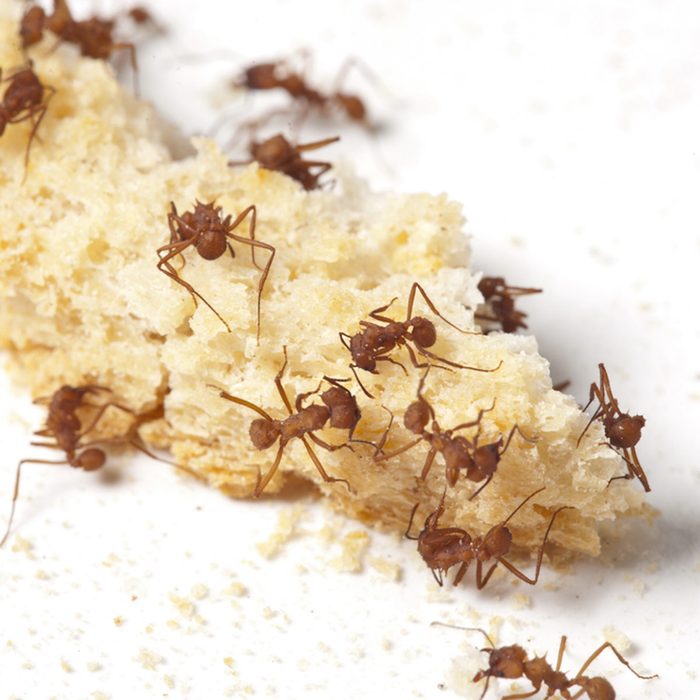How Does an Ant Know There are Crumbs on Your Floor?

You may be shocked to find out the effort ants put in to find your crumbs.
Having creepy crawly critters lurk in your home is never a good thing. One of the most common? Definitely ants. It seems like an ant knows the exact moment a crumb comes tumbling down from your sandwich and hits the floor, and next thing you know, an army of them are marching in. But how do they know that crumb is there?
Not sure if you have carpenter ants or termites? Here’s the difference.
You may not think of ants as having a keen sense of smell, but it’s this trait that drives them to your countertops and floors in search of a bite to eat. An ant is always on the lookout, with colonies sending scout ants to search for food in various directions.
Ants get into your home easily, via cracks and seams in walls, foundation gaps, through the floor, windows, doors, utility lines and more.
Check out these 26 tips for controlling pests in and around your home.
When the scouts go in search of food, they march in search of visual landmarks and a stereo-smell system to create an odor map. They use olfactory cues that take them in a circuitous random search. Different ants have different sized antennal lobes. They are all particularly large, and have around 420 to 430 nerve endings called glomeruli, which give these insects the ability to smell various odors. The bigger the lobes, the better the sense of smell.
Check out these 11 strategies for DIY pest control.
Once the scout finds the crumb, they collect a sample and march it back to the colony. Together, the team deciphers the shortest route to the food source, leaving a pheremone trail behind. The colony now follows the scout to the food.
Here are the 10 most dangerous bugs you need to avoid.
All you can really do to keep ants at bay is keep counters clean, sweep or vacuum often and close up any gaps in your homes exterior. However, they will likely find a way in anyway.


